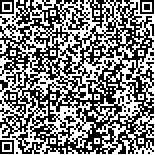| 本文已被:浏览 477次 下载 287次 |

码上扫一扫! |
|
|
| 补脾肾与补气血为主治疗再生障碍性贫血的临床疗效预测因素分析及预测模型构建 |
|
高琰1, 丁宇斌2, 王文儒3, 李芮3, 蒋佩珍3, 王金环4, 徐瑞荣5, 杨淑莲6, 王涛7, 唐旭东3
|
|
1.北京中医药大学研究生院, 北京 100029;2.深圳市中医院肿瘤与血液病科, 深圳 518005;3.中国中医科学院西苑医院血液科, 北京 100091;4.黑龙江中医药大学附属第一医院血液病科, 哈尔滨 150040;5.山东中医药大学附属医院血液科, 济南 250011;6.廊坊市中医医院血液科, 廊坊 065099;7.河南中医药大学第一附属医院血液肿瘤科, 郑州 450099
|
|
| 摘要: |
| [目的] 探究补脾肾与补气血为主治疗再生障碍性贫血(aplastic anemia,AA)的疗效相关的临床预测因素,并构建一个可以预测补脾肾与补气血为主治疗AA有效的列线图。[方法] 收集2018年5月至2021年6月就诊于全国19家医院的585例补脾肾与补气血为主治疗AA患者的临床资料及随访信息并进行回顾性观察研究,本研究最终纳入243例患者,根据患者短期治疗是否有效分为有效组和无效组;单因素分析探究AA补脾肾与补气血为主治疗有效的临床预测因素,采取二元Logistic回归分析相关临床预测因素,利用R语言制作列线图预测模型并建立动态列线图。采用Bootstrap自抽样法进行内部验证,C指数、校正曲线、Hosmer-Lemeshow拟合优度检验分析评估模型的区分度及校准度,DCA决策曲线评估模型的临床有效性。[结果] 多因素Logistic回归筛选出5个预测因素:病程、AA分型、BMI ≥ 25、中医治疗方案和输血依赖,本研究构建的列线图由以上5个变量组成。本研究构建的预测模型C指数及ROC曲线下面积(AUC)均为0.754(95%CI:0.677~0.830);校正曲线及拟合优度检验(χ2=3.525,P=0.897)显示了良好的一致性;决策曲线显示阈值概率为32%~94%时,具有较高的净获益值。[结论] 本研究构建的预测模型具备良好的预测再生障碍性贫血患者中西医结合治疗有效的能力。 |
| 关键词: 再生障碍性贫血 中西医结合治疗 疗效 预测模型 列线图 |
| DOI:10.11656/j.issn.1673-9043.2024.02.07 |
| 分类号:R556.5 |
| 基金项目:国家中医药管理局中医药行业科研专项(201507001-13);国家自然基金面上项目(81673819);国家自然基金面上项目(82074258)。 |
|
| Analysis of predicative factors and model construction of clinical efficacy of invigorating spleen and kidney and invigorating qi and blood in the treatment of aplastic anemia |
|
GAO Yan1, DING Yubin2, WANG Wenru3, Li Rui3, JIANG Peizhen3, WANG Jinhuan4, XU Ruirong5, YANG Shulian6, WANG Tao7, TANG Xudong3
|
|
1.Graduate School of Beijing University of Chinese Medicine, Beijing 100029, China;2.Department of Oncology and Hematology, Shenzhen Traditional Chinese Medicine, Shenzhen 518005, China;3.Hematology Department, Xiyuan Hospital, China Academy of Chinese Medical Sciences, Beijing 100091, China;4.Hematology Department, First Affiliated Hospital, Heilongjiang University of Chinese Medicine, Haerbin 150040, China;5.Hematology Department, Affiliated Hospital of Shandong University of TCM, Jinan 250011, China;6.Hematology Department, Langfang TCM Hospital, Langfang 065099, China;7.Department of Oncology and Hematology, The First Affiliated Hospital of Henan University of TCM, Zhengzhou 450099, China
|
| Abstract: |
| [Objective] To explore the clinical predictive factors related to the efficacy of spleen and kidney tonifying and qi and blood toning in the treatment of Aplastic Anemia(AA),and construct a nomogram that can predict the effectiveness of spleen and kidney toning and qi and blood toning in the treatment of AA. [Methods] The clinical data and follow-up information of 585 patients with AA who were treated by tonifying spleen and kidney and tonifying qi and blood in 19 hospitals across the country from May 2018 to June 2021 were collected,and a retrospective observational study was conducted. A total of 243 patients were divided into an effective group and an ineffective group according to whether the short-term treatment was effective or not. Univariate analysis was used to explore the clinical predictors of AA invigorating the spleen and kidney and tonifying qi and blood. Binary Logistic regression was used to analyze the relevant clinical predictors. Use R language to make a nomogram prediction model and build a dynamic nomogram. Bootstrap self-sampling method was used for internal verification,C index,calibration curve,and Hosmer-Lemeshow goodness-of-fit test were used to evaluate the discrimination and calibration of the model,and the DCA decision curve to evaluate the clinical validity of the model. [Results] Multivariate logistic regression screened out 5 predictors:disease course,AA type,BMI ≥ 25,TCM treatment plan and blood transfusion dependence. The nomogram constructed in this study was composed of the above 5 variables. The C index and the area under the ROC curve(AUC) of the prediction model constructed in this study were both 0.754(95%CI:0.677-0.830);the calibration curve and goodness of fit test (χ2=3.525,P=0.897) showed a good consistent;decision curves show a higher net benefit value when the threshold probability is 32% to 94%. [Conclusion] The predictive model constructed in this study has a good ability to predict the efficacy of integrated Chinese and Western medicine in the treatment of aplastic anemia patients. |
| Key words: aplastic anemia integrated traditional Chinese and Western medicine curative effect prediction model nomogram |
